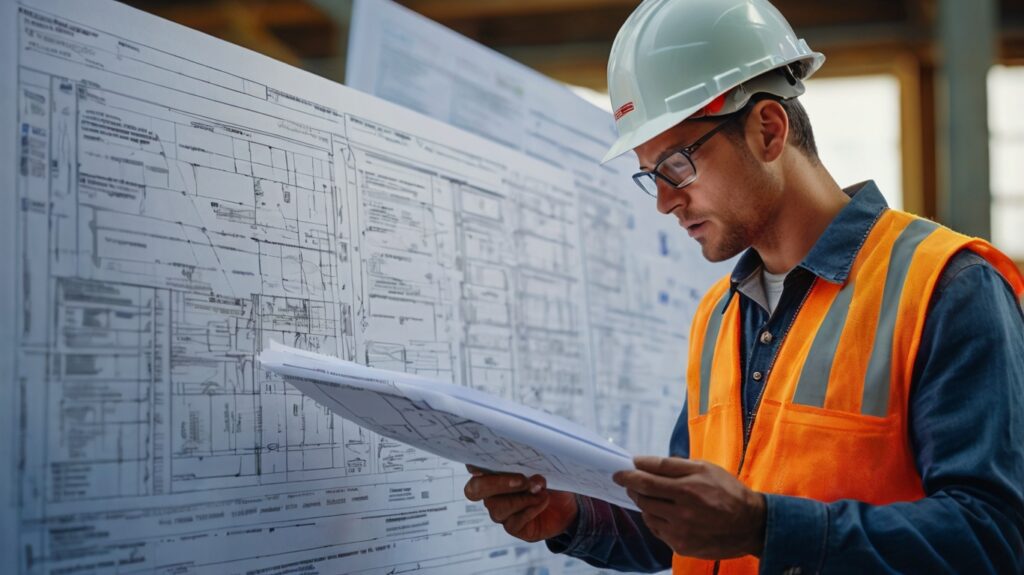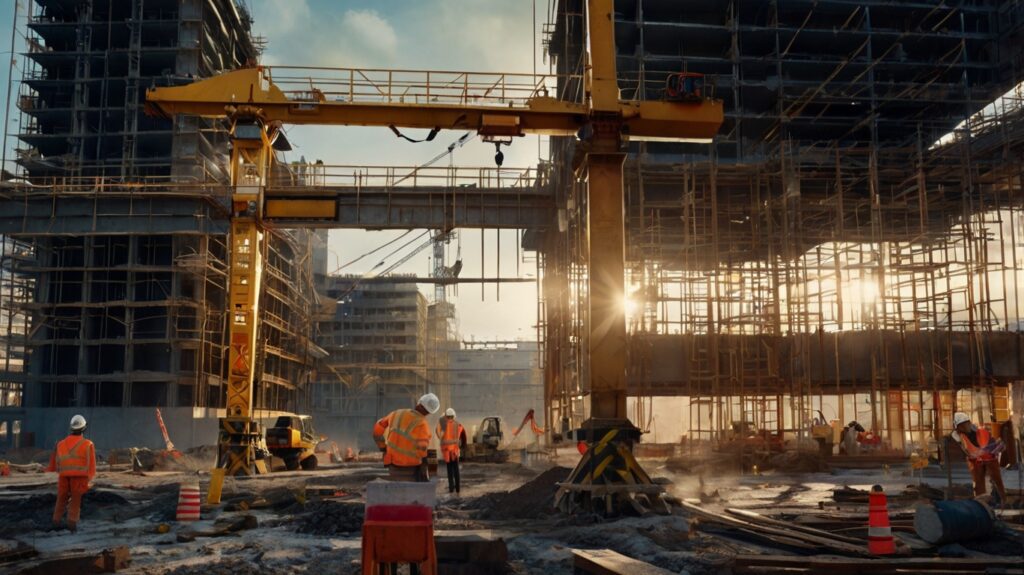- Understanding Construction Insurance Policies
- Identifying Common Claim Pitfalls
- The Importance of Accurate Documentation
- Miscommunication and Its Costly Consequences
- Avoiding Delays in Filing Claims
- Navigating Coverage Denials
- The Role of Expert Consultation
- Ensuring Compliance with Policy Terms
- Developing a Proactive Claim Management Strategy
Construction projects involve numerous challenges, from complex regulatory requirements to the high risks associated with property damage, accidents, and unforeseen circumstances. When trouble arises, construction insurance claims serve as a critical safety net. However, mistakes in the claims process can lead to reduced payouts or even complete claim denials. Below are key areas to focus on to ensure you avoid common errors and streamline your construction insurance claim procedure.

1. Understanding Construction Insurance Policies
One of the most important elements for any construction professional is to fully understand the insurance policies in place. These policies are uniquely crafted with provisions specific to construction risks, from general liability to property damage. A thorough review of your construction insurance policy immediately upon project initiation helps identify what is covered and what isn’t, so you’re better prepared if an incident occurs. Build a habit of revisiting your policies periodically, especially if modifications or new projects require additional coverage. This ongoing diligence minimizes confusion when filing a claim and prevents unpleasant surprises when claim disputes arise.
2. Identifying Common Claim Pitfalls
Mistakes in construction insurance claims frequently stem from a lack of awareness about common pitfalls. These include assuming that all damages are covered, failing to meet claim deadlines, and misinterpreting policy language. For example, certain events such as natural disasters, vandalism, or equipment malfunction may have specific coverage limitations or exclusions. Familiarity with these pitfalls enables you to critically assess your situation and align your claim process with the expectations of your insurance provider. In addition, paying attention to the unique terms and conditions laid out in your policy ensures that you do not inadvertently fall into these common traps.

3. The Importance of Accurate Documentation
Documentation plays a pivotal role in securing a successful insurance claim outcome. Accurate records provide evidence of damages, proof of prior maintenance, and detailed accounts of any incidents. For construction projects, this typically means maintaining an updated and comprehensive file including photos, videos, invoices, repair estimates, and any correspondence with contractors or suppliers. It’s also essential to document any work adjustments or repairs already initiated following damage. This meticulous record-keeping not only supports your claim but also demonstrates a proactive stance in managing project risks. In cases of dispute or discrepancy, the clarity provided by accurate documentation helps verify that all aspects have been properly captured and reported.
4. Miscommunication and Its Costly Consequences
A common error in the claims process is miscommunication between stakeholders: the insured party, adjusters, contractors, and sometimes even legal representatives. Miscommunication can easily occur when each party assumes that the other understands all the fine details regarding damage, repair timelines, or policy coverage. Ensure you have a single point of contact or a clearly resolved chain of communication within your teams. Be explicit and transparent when discussing your claim with the insurer, and follow up every conversation with written emails confirming the details discussed. This prevents misunderstandings that can delay the claim processing or lead to disagreements over the specifics of coverage and repair costs. Effective communication is not only the key to a smooth claims process but also assists in swift resolution should conflicts emerge.
5. Avoiding Delays in Filing Claims
Timing is a critical factor in the construction insurance claims process. Policies typically contain strict deadlines for filing claims, and even a minor oversight regarding these dates can result in a denied claim. From the moment damage is identified, action should be taken swiftly. Begin by notifying your insurance provider and ensuring that all evidence of damage is gathered without delay. Consider setting up internal processes, such as digital logbooks or monitoring systems, to swiftly flag incidents and initiate the claims process. If delays occur, either due to slow documentation or internal miscommunications, your claim—no matter how valid—could be rejected on technical grounds. A proactive approach, combined with clearly defined reporting procedures, helps mitigate the risk of delays and strengthens your position when filing a claim.

6. Navigating Coverage Denials
Even with an immaculate documentation process and timely reporting, claims might still face coverage denials. Denials can arise from issues like non-compliance with policy terms, insufficient evidence, or disputes over the exact nature of damages sustained. In these instances, it is important not to view the outcome as final. Instead, carefully review the denial letter, understand the insurer’s reasoning, and compare it with your policy details. Many construction insurance policies include provisions for appeals or additional reviews. Engage with a qualified expert or attorney who can help interpret ambiguous policy terms or navigate the appeals process. Failure to pursue a re-evaluation when there is a potential oversight on the part of the insurer can result in a significant financial setback.
7. The Role of Expert Consultation
Construction projects are multi-layered operations involving technical, financial, and legal expertise. When a claim is in question, expert consultation can prove invaluable. Whether it is hiring a public adjuster, an insurance claims consultant, or legal counsel, professionals can offer insights that you might overlook. Expert consultants can help audit your documentation, provide an independent assessment of damages, and negotiate with insurance companies on your behalf. They are especially useful when facing complex claims that involve specialized aspects of construction work. Expert input helps ensure that your claim is as comprehensive as possible, minimizing the risk of policy violations or overlooked damage details. Their role is to work on your behalf, guiding you through the intricacies of negotiating with insurance providers and ensuring that every aspect of the claim is properly addressed in accordance with policy terms.

8. Ensuring Compliance with Policy Terms
Each insurance policy comes with a set of obligations that exist in exchange for coverage. Ensuring strict compliance with all policy terms is paramount. This means understanding the conditions that trigger coverage, any necessary preventive measures you must follow after an incident, and the specific details that qualify damages under the policy. Non-compliance, even if accidental, can create grounds for partial or complete denial. Regular training sessions and updates on changes to policy conditions are essential for those managing construction insurance claims. Encourage your team to cultivate a culture of compliance by establishing clear, written procedures that align with the policy. Consider periodic internal audits of your documentation process and claim management strategy to ensure adherence to payment terms, reporting requirements, and evidence submission. This vigilance guards against preventable mistakes that could jeopardize your entire claim.
9. Developing a Proactive Claim Management Strategy
A proactive claim management strategy is the most effective defense against unexpected disruptions in your construction project. Rather than taking a reactive approach, prepare for potential incidents by drafting detailed internal protocols and contingency plans. This begins with regular risk assessments on ongoing projects – identify potential hazards and create intervention plans that outline the process for documenting damages, notifying your insurer, and engaging with third-party experts. Establish clear roles and responsibilities within your teams, so that when incidents occur, there is no confusion about who should report the issue or gather the necessary documentation. Embrace new technologies, such as project management software and digital documentation tools, to help capture details in real time. An early and proactive claim management strategy not only increases the likelihood of a favorable claim resolution but also enhances overall project resilience against unforeseen damages.

Conclusion
Successful navigation of construction insurance claims demands a strategic approach that avoids common mistakes such as miscommunication, delayed filings, poor documentation, and non-compliance with policy terms. By understanding your insurance policies thoroughly, identifying common pitfalls, maintaining accurate documentation, and fostering clear communication channels, you enhance your ability to secure the coverage you deserve. In times of dispute or coverage denial, expert consultation can be a game changer, guiding you through complex negotiations and ensuring that no detail is left unaddressed.
Equally important is the development of a proactive claim management strategy designed to respond swiftly and effectively to incidents. This involves timely notification, adherence to policy guidelines, and thorough documentation procedures. By placing equal emphasis on preventive measures as well as on quick, efficient responses to damage, construction companies can mitigate the financial risks associated with unexpected events.
Ultimately, the construction sector operates in an environment filled with potential hazards, and having a well-prepared approach to insurance claims not only minimizes financial losses but also contributes to the overall stability of your project’s operations. A disciplined approach that combines comprehensive policy understanding, diligent documentation, effective communication, and expert consultation creates a robust framework for managing insurance claims. This not only secures the necessary payouts but also solidifies the reputation of your construction project for its reliability and commitment to risk management.
